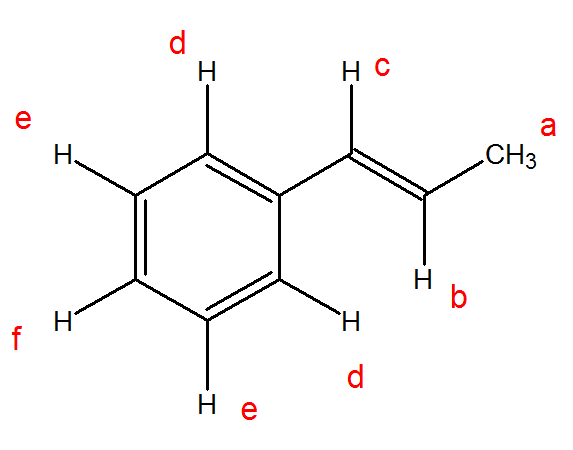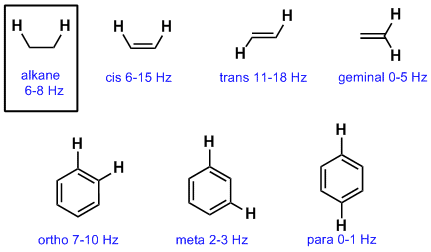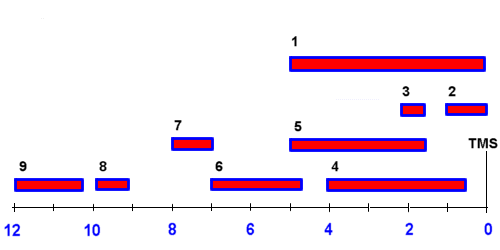Table of characteristic proton nmr shifts type of proton type of compound chemical shift range ppm rch 3 1 aliphatic 0 9 r 2 ch 2 2 aliphatic 1 3 r 3 ch 3 aliphatic 1 5 c c h vinylic 4 6 5 9 c c h vinylic conjugated 5 5 7 5 c c h acetylenic 2 3 ar h aromatic 6 8 5 ar c h benzylic 2 2 3 c c ch 3 allylic 1 7 hc f.
Vinylic proton nmr shift.
Characteristic proton chemical shiftstype of protonstructurechemical shift ppmcyclopropanec3h60 2primaryr ch30 9secondaryr2 ch21 3tertiaryr3 c h1 5vinylicc c h4 6 5 9acetylenictriple.
C h acetylenic 2 3 ar h aromatic 6 8 5 ar c h benzylic 2 2 3 c c c h.
A summary table of chemical shift information is given in appendix iii.
Come anywhere in the proton nmr spectrum.
Table of characteristic proton nmr chemical shifts.
In other words frequencies for chemicals are measured for a 1 h or 13 c nucleus of a sample from the 1 h or 13 c resonance of tms.
These methods which range from very simple to somewhat sophisticated are complimentary to one.
Nmr chemical shift values table in the previous post we talked about the principles behind the chemical shift addressing questions like how the ppm values are calculated why they are independent of the magnetic field strength and what is the benefit of using a more powerful instrument.
This is not surprising since the proton is not only vinylic but it is also alpha to a carbonyl group.
Assigning the 1h nmr signals of aromatic ring 1h atoms assigning 1h nmr signals of 1h atoms on an aromatic ring based upon their chemical shift and coupling can be accomplished in a number of different ways which will be detailed below.
Notice that the proton closest to the carbonyl group is at a higher chemical shift than the proton in cyclohexene 6 05 ppm for cyclohexenone vs.
Tetramethylsilan tms ch 3 4 si is generally used for standard to determine chemical shift of compounds.
1 h nmr chemical shifts.
Chapters devoted to those groups.
This is a general trend add approximately 0 2 0 4 ppm for each additional alkyl group.
0 8 1 5 ppm alkane c h.
Typical h nmr shift ranges.
Type of proton type of compound chemical shift range ppm rc h 3 1 aliphatic 0 9 r 2 c h 2 2 aliphatic 1 3 r 3 c h 3 aliphatic 1 5 c c h vinylic 4 6 5 9 c c h vinylic conjugated 5 5 7 5 c.
30 c using 1h and 31p nuclear magnetic resonance spectroscopy.
Nmr spectra of alkenes two characteristic proton nmr absorptions for alkenes are the absorptions for the protons on the double bond called vinylic protons red in the following structures and the protons on.
Chemical shift is associated with the larmor frequency of a nuclear spin to its chemical environment.
Chemical shift d type of proton examples chemical shift in ppm comments.









